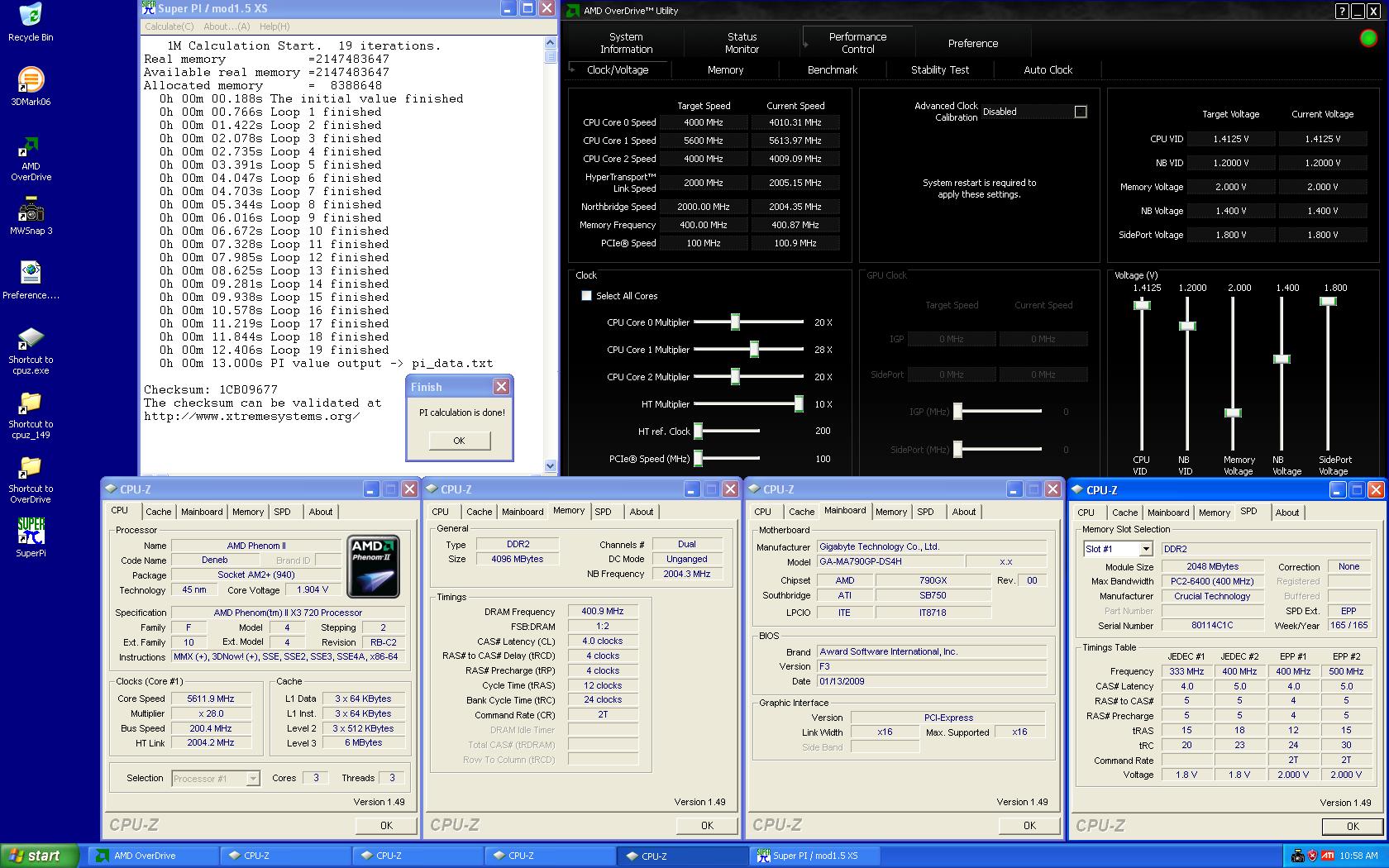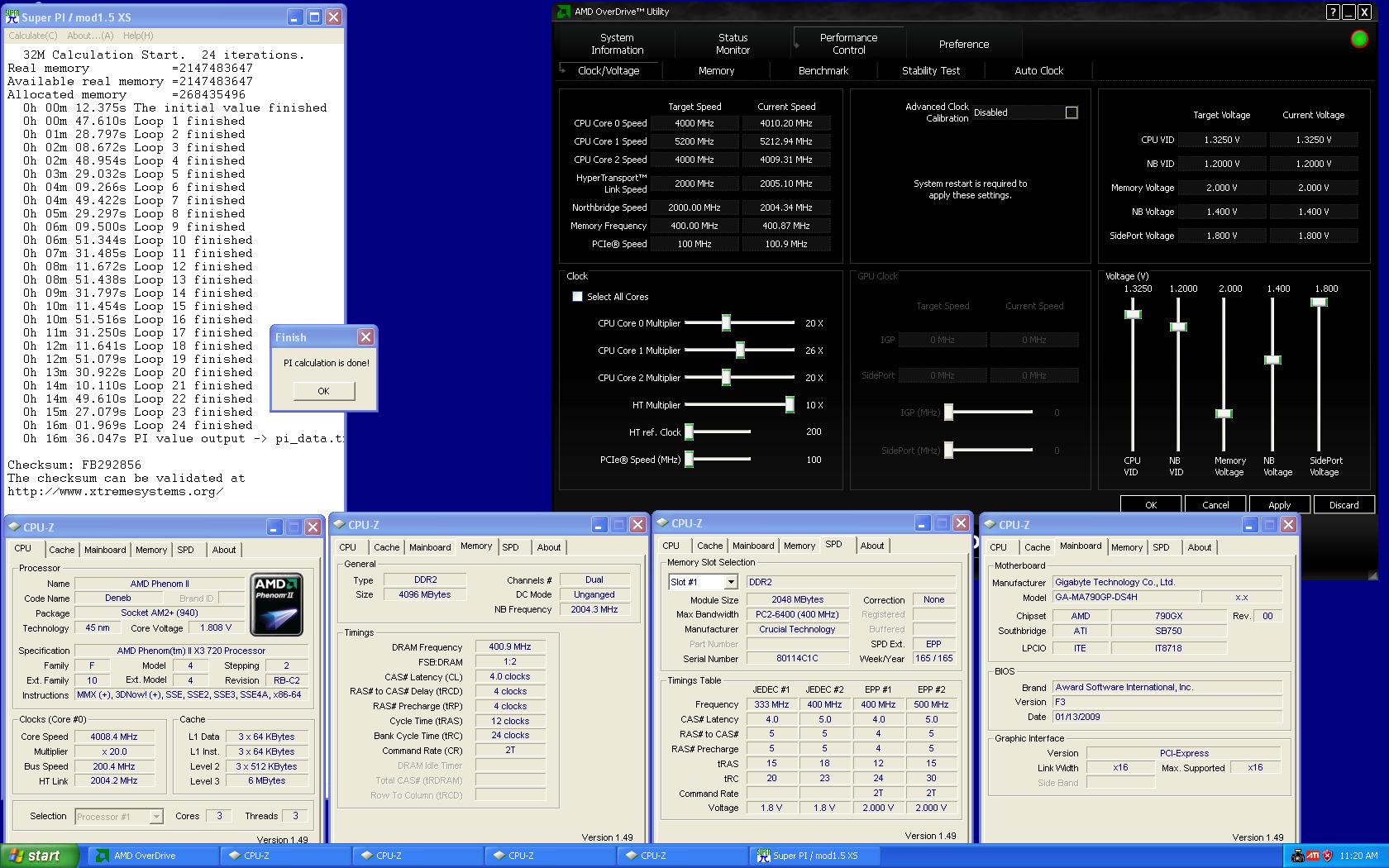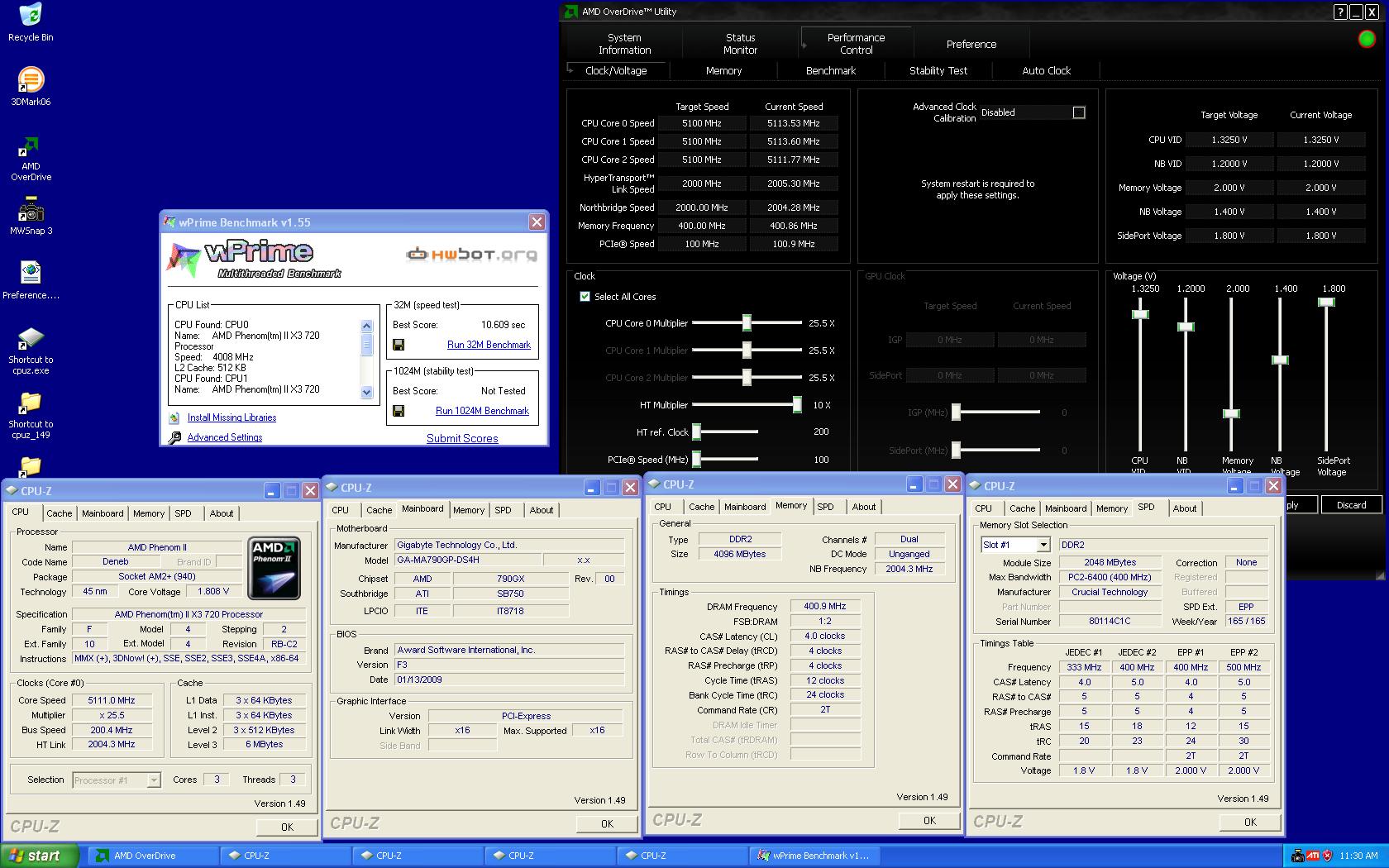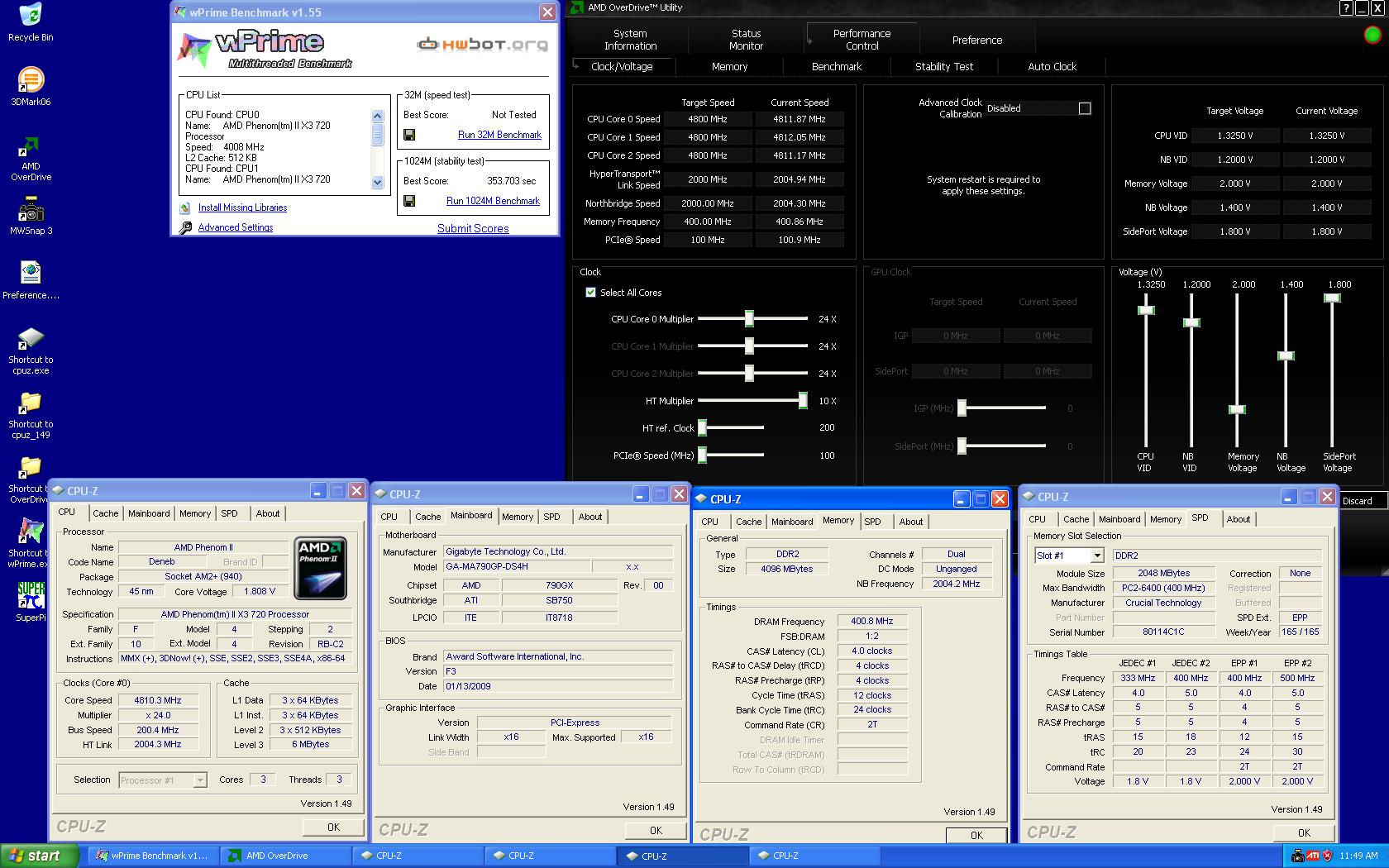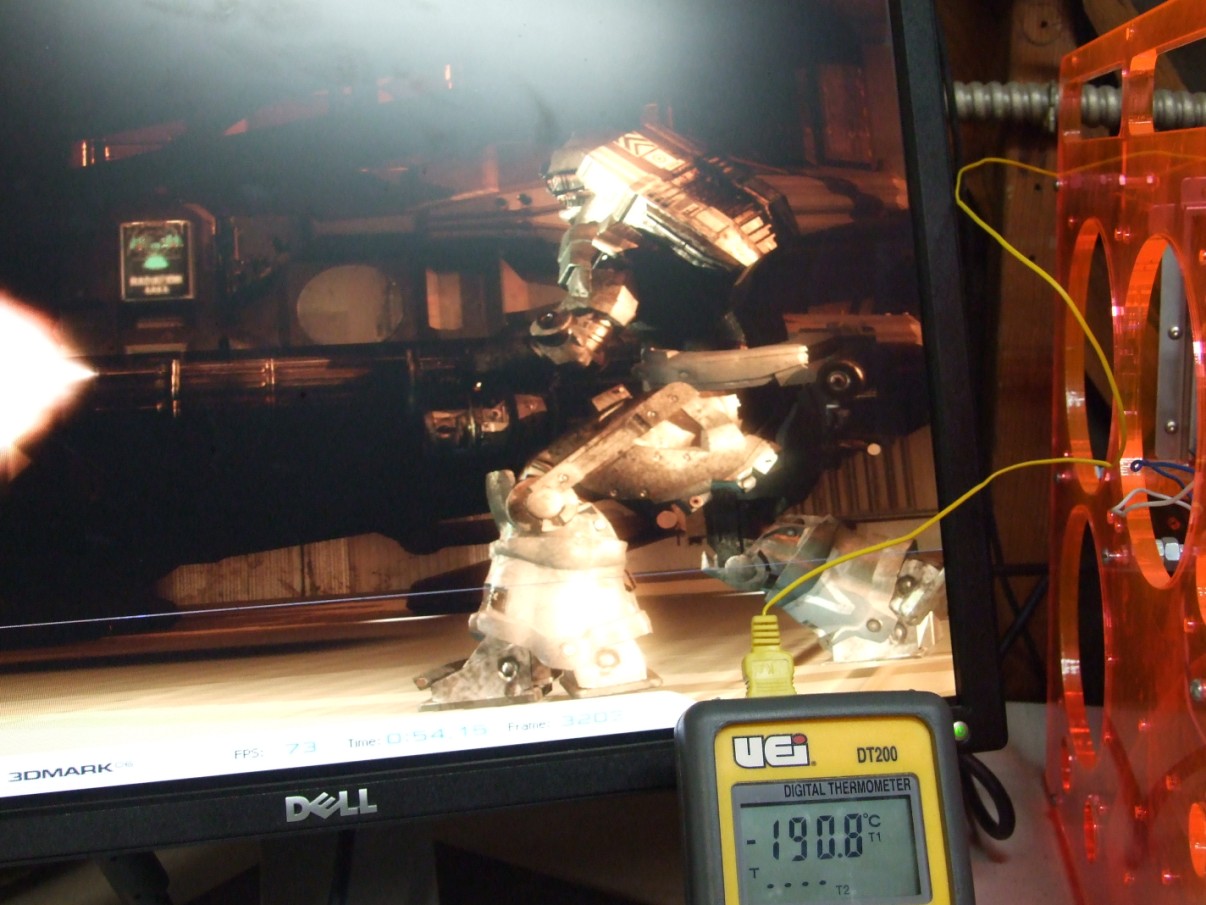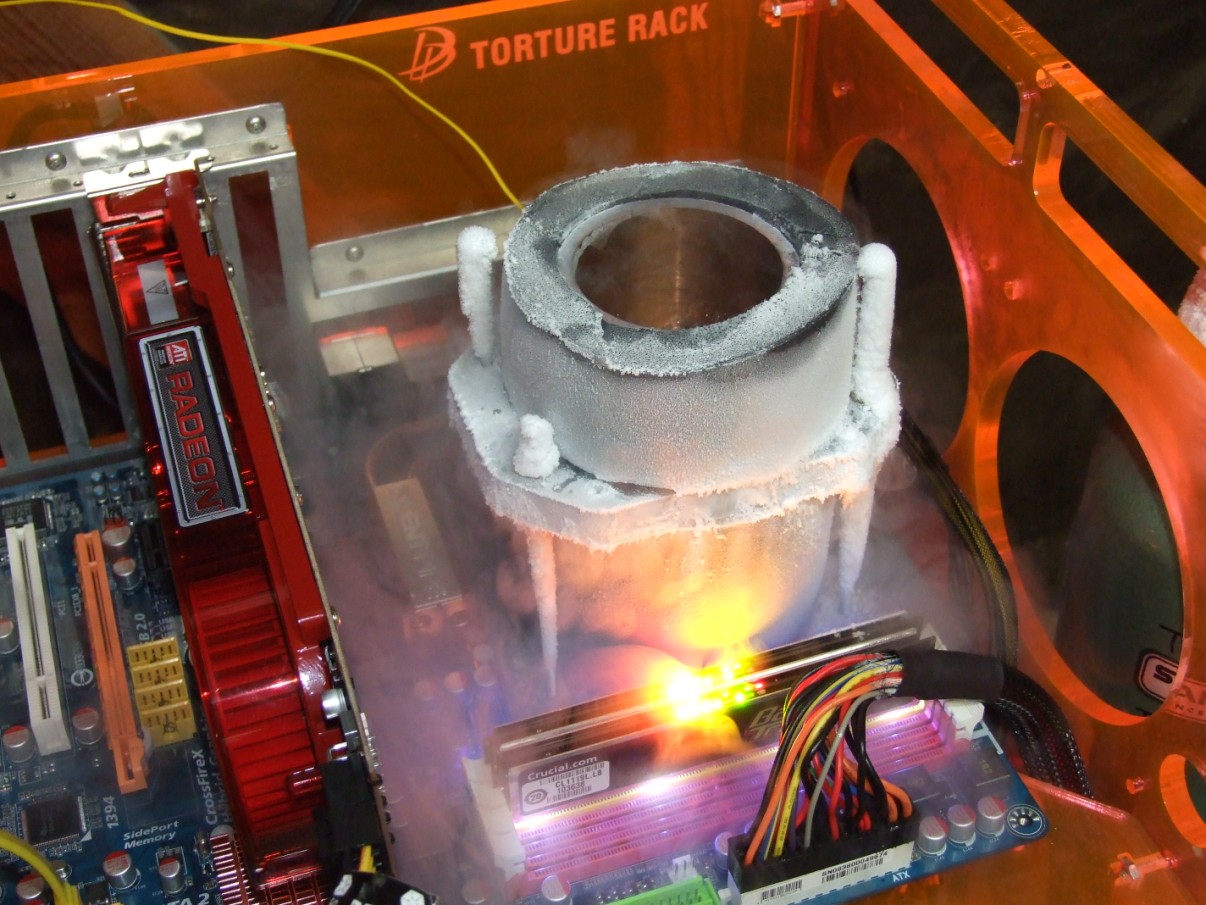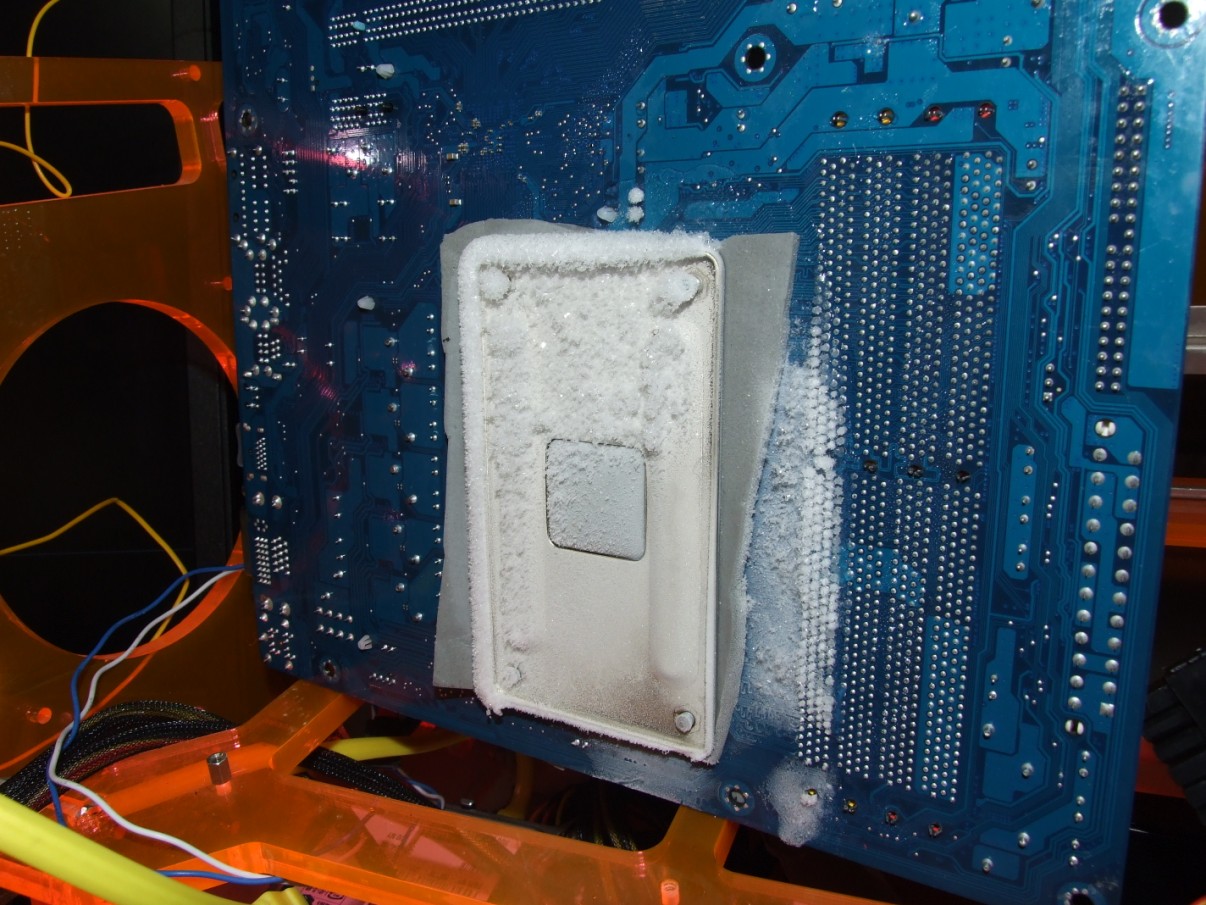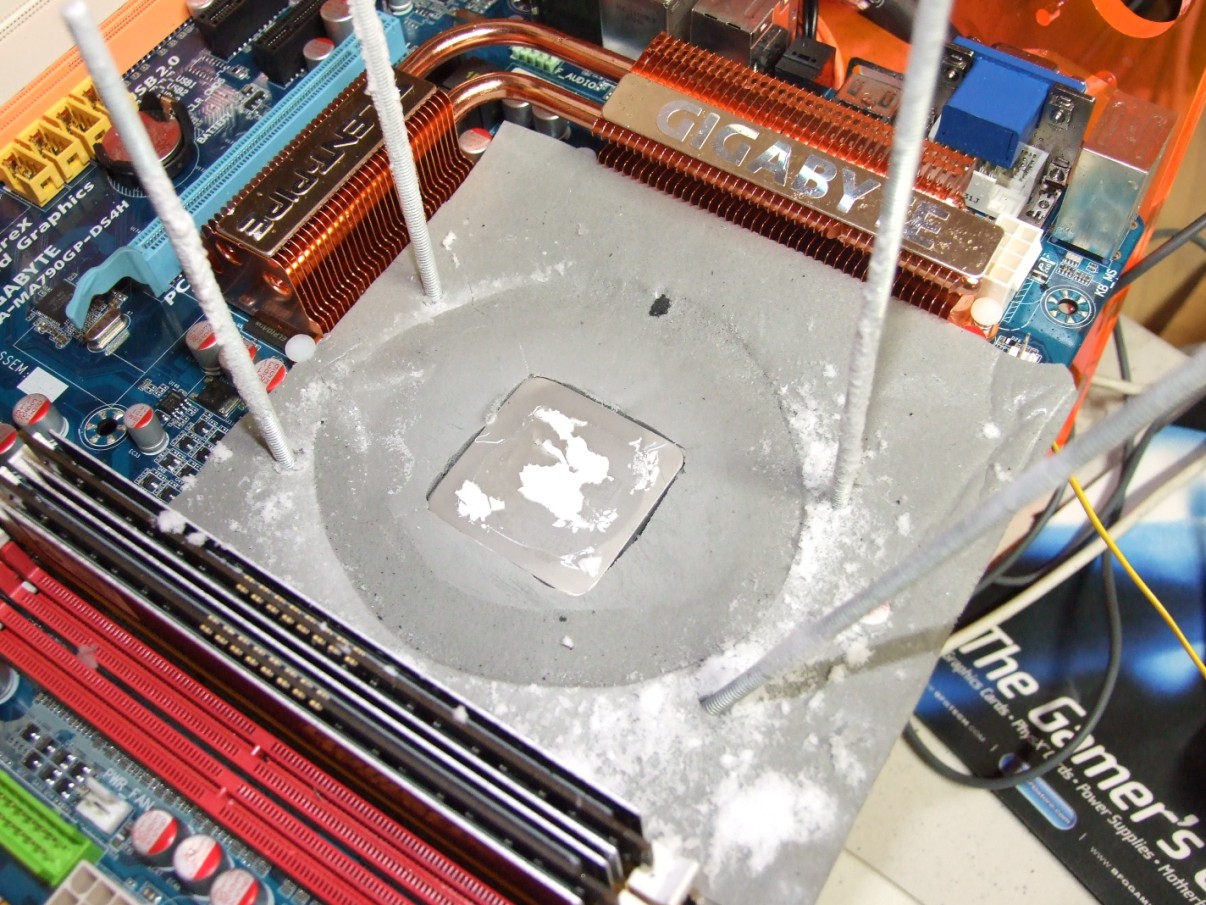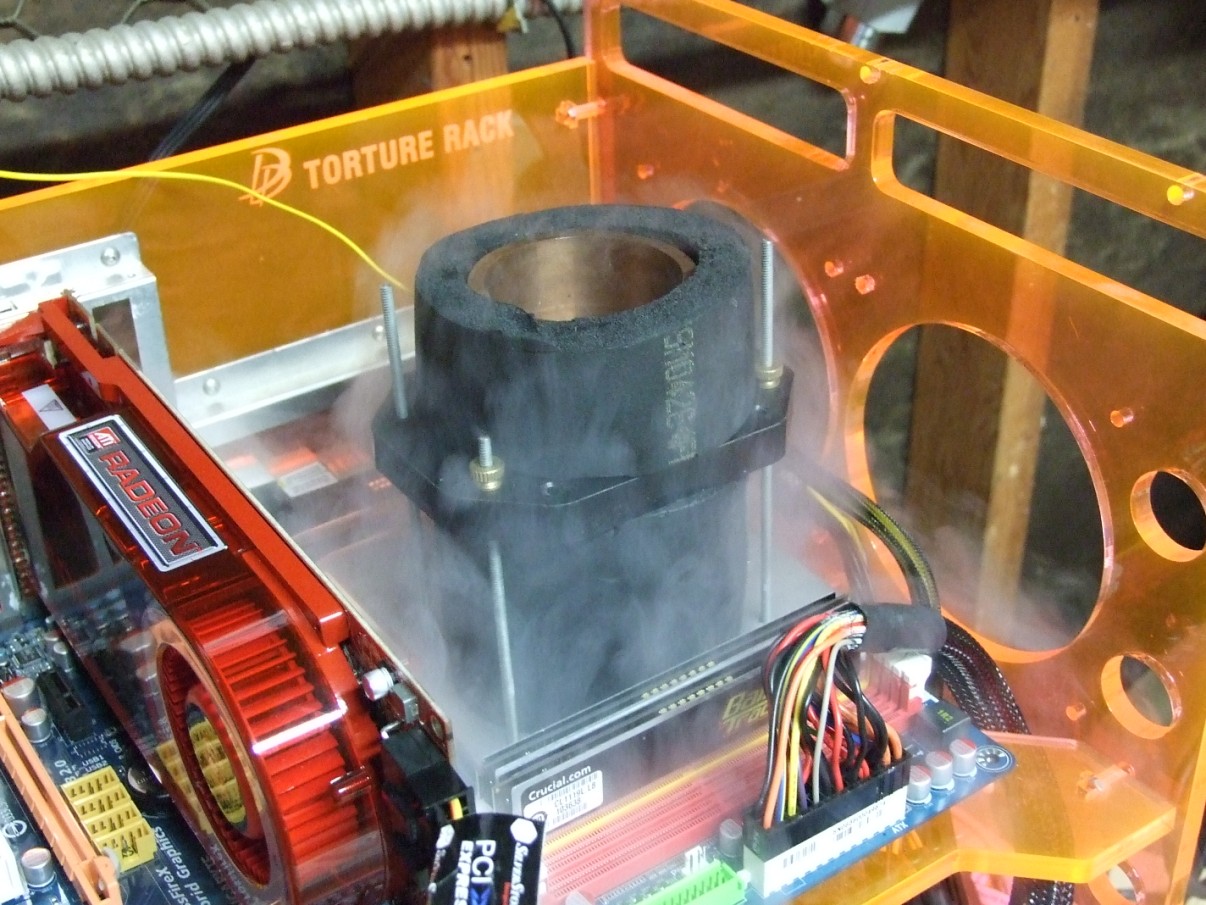Phenom II On Ice: AM3 Overclocked With LN2
SuperPi!
SuperPi 1M is a very short benchmark, and it only runs on a single core. With multi-core processors, not all cores perform equally well. Many overclockers pick the strongest core to run the benchmark by changing the application's affinity in Windows Task Manager. This is typically why SuperPi 1M speeds are very fast compared to other benchmarks, which either put strain on the core for a longer time or require all cores to perform equally well.
At a speed of 5.6 GHz, we were able to run SuperPi 1M in 13.000 Seconds. That is more than 89% faster then stock run at 24.609 seconds.
More Pi (32M)
SuperPi 32M takes much longer to run, so speeds are typically slower then SuperPi 1M. We were able to successfully pass SuperPi 32M at 5.2 GHz. Core 1 on the processor was much stronger then the other cores. If you look at AOD, you can see that Core 1 was running at 5.2 GHz, while Core 0 and 3 were at 4 GHz. The ability for AMD processors to adjust each core speed independently allows for great overclocking flexibility.
At 5.2 GHz, we were able to run this particular bench at 16 minutes and 36 seconds, compared to over 28 minutes at stock. This is an increase of over 71% in performance.
Dusting Off The WPrime
As we move along the benchmarks, each test becomes more and more difficult. WPrime utilizes all 3 cores to compute the number of digits after the decimal in Pi. With all cores running at full speed, the processor is pushed to its limit.
For WPrime 32M, we ran all 3 cores at 5.1 GHz and completed the bench at 10.609 seconds versus the stock results of 18.797 seconds. The results under LN2 are 77% faster.
More WPrime
For WPrime 1024m, we ran all 3 cores at only 4.8 GHz, which is still a 2 GHz overclock. We completed the benchmark in 353.703 seconds, versus 600 seconds at stock. We achieved a 70% increase over baseline results.
Get Tom's Hardware's best news and in-depth reviews, straight to your inbox.
Here Comes 3DMark
Futuremark's 3DMark06 is a graphics benchmark, which has its own score specifically for the processor. During the baseline run, AMD's Phenom II X3 720 Black Edition earned a score of 3463. With the processor running at -190 C at 4.5 GHz, we obtained a CPU score of 5262, which is over 52% faster. The performance increase also gave a nice 3,000 points increase to the overall score.
Cleaning Up After LN2
Now that we have completed all the benchmarks using LN2, it is time to clean up the frozen mess. After a couple of hours of benching, frost and snow have built up on the threads and hold-down. For longer benchmarking sessions, many overclocker wrap the pot with a second layer of insulation to prevent condensation. As long as the pot is cold, there is no problem with frost. In the event the area warms up, the frost will melt, which can cause electrical short circuits.
Frozen Components
Flipping the motherboard over, you can see that the hold-down is completely frozen, as well as the motherboard and DIMM sockets. Luckily, we had that coat of nail polish to keep the board protected from the frost.
She Lives To Fight Another Day
After removing the pot, it becomes clear that there is no frost or moisture around the CPU and socket. This means the CPU will live to see another day of benching under extreme conditions.
Conclusion
Today we put AMD's latest Phemon II X3 720 Black Edition processor to the test. AMD has proven it definitely has a winner here, at least for the hardcore overclockers out there. The chip was able to easily bench 100% faster then stock without any significant problems. The X3 720 Black Edition will definitely be a favorite processor for those that love and enjoy tuning their systems beyond manufacturer specifications.
Tom's Hardware is the leading destination for hardcore computer enthusiasts. We cover everything from processors to 3D printers, single-board computers, SSDs and high-end gaming rigs, empowering readers to make the most of the tech they love, keep up on the latest developments and buy the right gear. Our staff has more than 100 years of combined experience covering news, solving tech problems and reviewing components and systems.
-
xx12amanxx Sweet! Not bad for a 3ghz Overclock ehh. Im excited to see what the higher clocked version's will do.Reply -
accessgranted At 5.2 GHz, we were able to run this particular bench at 16 minutes and 36 seconds, compared to over 28 minutes at stock. This is an increase of over 40% in performance.It's a 75% (28/16 = 1,75) in performance, not 40%.Reply -
accessgranted ReplyFor WPrime 32M, we ran all 3 cores at 5.1 GHz and completed the bench at 10.609 seconds versus the stock results of 18.797 seconds. The results under LN2 are 44% faster.
Wrong again :) -
JustPlainJef No, AccessGranted, you are wrong. If the first one benched at 28 minutes, and it ran OC'ed in 14 minutes, that's a 50% increase. Since it ran in 16:36, that's less than a 50% performance increase. Same with the second one. 18.8 / 2 is 9.4. Benchmark finished in 10.6, which is less than a 50% increase. You are doing the math backwards as you always compare to the original number. 10.6/18.8 = 56% of the original or a 44% decrease in time.Reply
;) -
macer1 Toms editor should really get his glasses checked. that of find a new job with all the mistakes in this artical..Reply
but good to see from AMD. -
accessgranted If a benchmark takes 2 minutes at default and then 1 minute overclocked that's a 100% increase in performance. 100% increase in performance = 50% decrease in time. It's twice as fast thus taking half the time. It can't be any other way.Reply -
accessgranted Ok, lets say a CPU scales perfect with clockspeed.Reply
X Mhz:
Benchmark 1: 20 fps
Benchmark 2: 20 sec
2X Mhz
Benchmark 1: 40 fps
Benchmark 2: 10 sec
It's 100% faster -> twice as many fps, half as long rendering time. -
sohei :) hahaha ,,,Reply
anyway AMD cpu = Velocity Raptor
the fabrication technology of this cpus is incredible -
cangelini macer1Toms editor should really get his glasses checked. that of find a new job with all the mistakes in this artical..but good to see from AMD.Reply
Irony?
